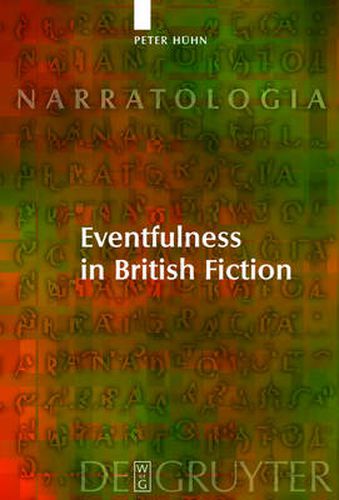Readings Newsletter
Become a Readings Member to make your shopping experience even easier.
Sign in or sign up for free!
You’re not far away from qualifying for FREE standard shipping within Australia
You’ve qualified for FREE standard shipping within Australia
The cart is loading…






This title is printed to order. This book may have been self-published. If so, we cannot guarantee the quality of the content. In the main most books will have gone through the editing process however some may not. We therefore suggest that you be aware of this before ordering this book. If in doubt check either the author or publisher’s details as we are unable to accept any returns unless they are faulty. Please contact us if you have any questions.
An event, defined as the decisive turn, the surprising point in the plot of a narrative, constitutes its tellability, the motivation for reading it. This book describes a framework for a narratological definition of eventfulness and its dependence on the historical, socio-cultural and literary context. A series of fifteen analyses of British novels and tales, from late medieval and early modern times to the late 20th century, demonstrates how this concept can be put into practice for a new, specifically contextual interpretation of the central relevance of these texts. The examples include Chaucer’s Miller’s Tale , Behn’s Oroonoko , Defoe’s Moll Flanders , Richardson’s Pamela , Fielding’s Tom Jones , Dickens’s Great Expectations , Hardy’s On the Western Circuit , James’s The Beast in the Jungle , Joyce’s Grace , Conrad’s Shadow-Line , Woolf’s Unwritten Novel , Lawrence’s Fanny and Annie , Mansfield’s At the Bay , Fowles’s Enigma and Swift’s Last Orders . This selection is focused on the transitional period from 19th-century realism to 20th-century modernism because during these decades traditional concepts of what counts as an event were variously problematized; therefore, these texts provide a particularly interesting field for testing the analytical capacity of the term of eventfulness.
$9.00 standard shipping within Australia
FREE standard shipping within Australia for orders over $100.00
Express & International shipping calculated at checkout
This title is printed to order. This book may have been self-published. If so, we cannot guarantee the quality of the content. In the main most books will have gone through the editing process however some may not. We therefore suggest that you be aware of this before ordering this book. If in doubt check either the author or publisher’s details as we are unable to accept any returns unless they are faulty. Please contact us if you have any questions.
An event, defined as the decisive turn, the surprising point in the plot of a narrative, constitutes its tellability, the motivation for reading it. This book describes a framework for a narratological definition of eventfulness and its dependence on the historical, socio-cultural and literary context. A series of fifteen analyses of British novels and tales, from late medieval and early modern times to the late 20th century, demonstrates how this concept can be put into practice for a new, specifically contextual interpretation of the central relevance of these texts. The examples include Chaucer’s Miller’s Tale , Behn’s Oroonoko , Defoe’s Moll Flanders , Richardson’s Pamela , Fielding’s Tom Jones , Dickens’s Great Expectations , Hardy’s On the Western Circuit , James’s The Beast in the Jungle , Joyce’s Grace , Conrad’s Shadow-Line , Woolf’s Unwritten Novel , Lawrence’s Fanny and Annie , Mansfield’s At the Bay , Fowles’s Enigma and Swift’s Last Orders . This selection is focused on the transitional period from 19th-century realism to 20th-century modernism because during these decades traditional concepts of what counts as an event were variously problematized; therefore, these texts provide a particularly interesting field for testing the analytical capacity of the term of eventfulness.